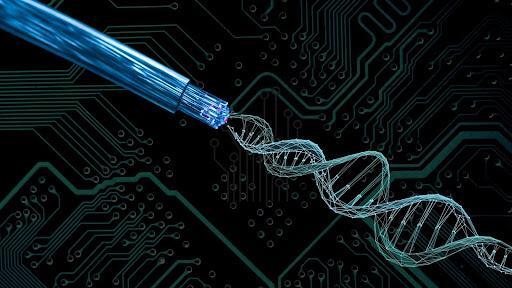
DNA’s Electron Flow May Unlock Future Biocompatible Electronics
The pursuit of innovative materials has led researchers to an unexpected discovery – DNA, the fundamental molecule of life, may hold the key to creating smaller, more efficient, and biocompatible electronic devices. A team of scientists has made a groundbreaking revelation about the electrical properties of DNA, which could revolutionize the field of electronics.
The study, published in a recent article, delves into the interactions between electrons and molecular vibrations, or phonons, in DNA strands. These interactions create novel pathways for electron transport, paving the way for the development of DNA-based electronic devices. This breakthrough has significant implications for the creation of biocompatible electronics, which could have far-reaching applications in medicine, healthcare, and beyond.
Electronics have come a long way since their inception, with advancements in semiconductors, transistors, and other materials enabling the development of smaller, faster, and more efficient devices. However, as devices continue to shrink in size, the need for new materials that can withstand the demands of miniaturization becomes increasingly pressing. DNA, with its unique molecular structure and properties, may offer a solution to this challenge.
The research team, led by Dr. [Name], used advanced computational techniques to simulate the behavior of electrons in DNA strands. By analyzing the interactions between electrons and phonons, they discovered that these interactions create a complex network of pathways for electron transport. This network allows electrons to flow through the DNA strand with unprecedented efficiency, making it an attractive material for electronic applications.
One of the key advantages of DNA-based electronics is its potential for biocompatibility. Unlike traditional electronic materials, DNA is naturally occurring and can be easily integrated into living systems. This property opens up new possibilities for medical applications, such as the development of implantable devices, biosensors, and other medical equipment.
The researchers also noted that DNA-based electronics could offer significant improvements in energy efficiency. Traditional electronic devices rely on complex circuits and power-hungry components, which can lead to heat dissipation and energy waste. DNA, with its unique electron-vibration dynamics, may enable the development of more efficient devices that consume less power and generate less heat.
The potential applications of DNA-based electronics are vast and varied. For example, implantable devices could be designed to monitor vital signs, transmit medical data, or even deliver targeted treatments. Biosensors could be developed to detect specific biomarkers, track environmental pollution, or monitor food safety. The possibilities are endless, and the potential impact on healthcare, medicine, and our daily lives is significant.
While the discovery of DNA’s electron flow is a significant breakthrough, the development of DNA-based electronics is still in its infancy. Researchers will need to overcome several challenges, including the scalability and reproducibility of DNA-based devices, the development of suitable materials and fabrication techniques, and the integration of DNA with traditional electronic components.
Despite these challenges, the potential rewards are substantial. DNA-based electronics could enable the creation of smaller, more efficient, and biocompatible devices that could transform industries and revolutionize our daily lives. As researchers continue to explore the properties of DNA, we can expect to see exciting developments in this field in the years to come.
In conclusion, the discovery of DNA’s electron flow is a groundbreaking finding that highlights the potential of DNA as a building block for future electronics. With its unique electron-vibration dynamics, DNA may offer a solution to the challenges of miniaturization, energy efficiency, and biocompatibility. As researchers continue to explore the properties of DNA, we can expect to see significant advancements in the field of electronics and beyond.
News Source:
https://researchmatters.in/news/researchers-study-how-electrons-move-dna-strands-electronic-applications






